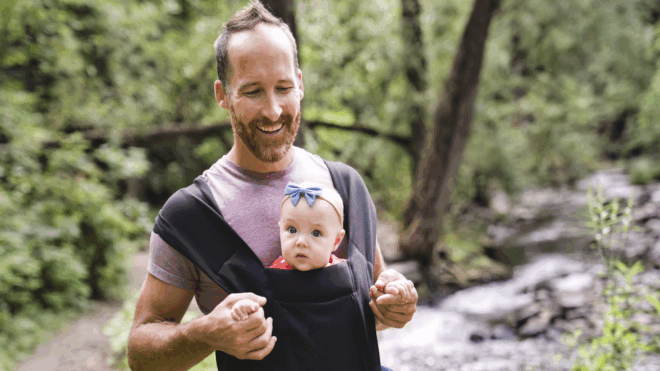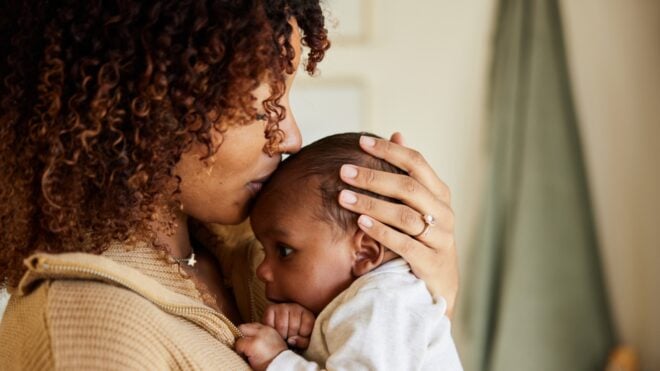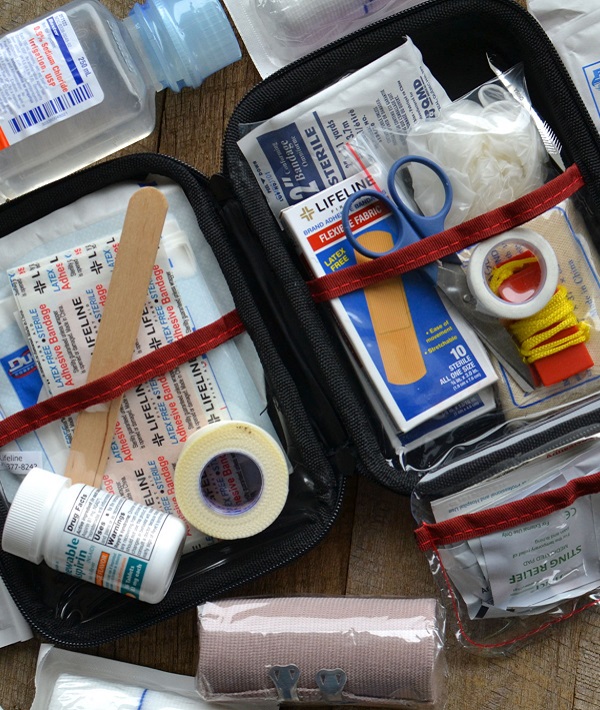
Be prepared
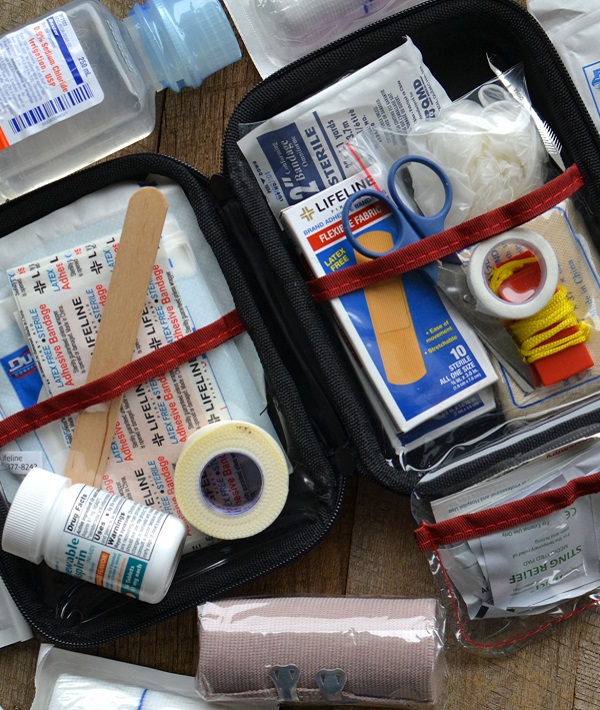
Whether you're at home, in your car or spending time with your family outdoors, it's important to have a first-aid kit on hand for emergencies. Having your kit stocked with essential health and safety items means you'll always be prepared for all the accidents and ouchies that can come your way. Keep reading to find out which items you definitely want to keep in your kit and why.
Hand sanitizer
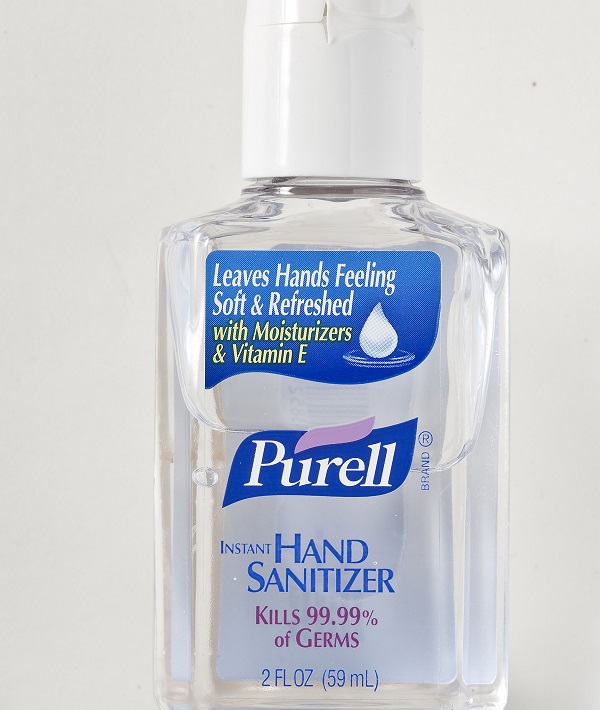
Hand sanitizer is an important product to keep in your first-aid kit, especially when you're on the road or outdoors and away from a source of soap and water to wash your hands. Before you ever treat a wound or injury, it's important to have clean hands. While hand sanitizer isn't as effective as hand washing, it can significantly reduce the amount of microbes on the skin, helping prevent infection. Just make sure to use hand sanitizer that's at least 60 percent alcohol.
Latex-free gloves
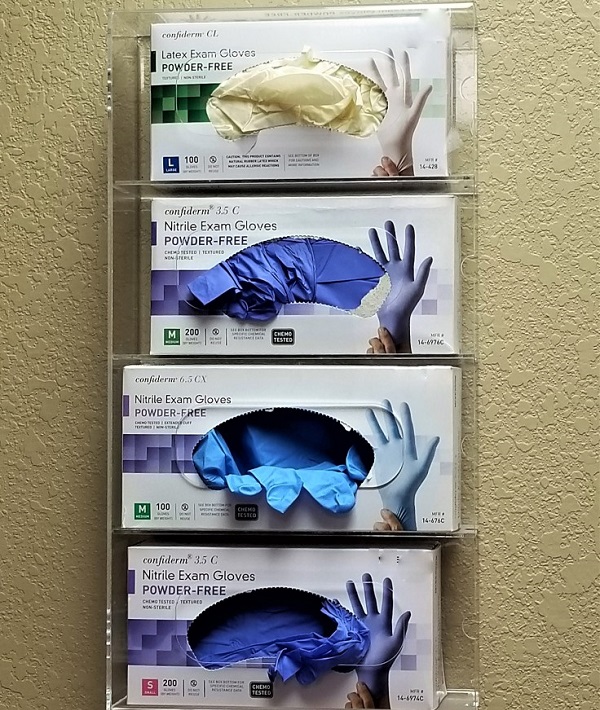
Even if your hands are clean, it's important to wear gloves before tending to any injury, especially those that have blood or other bodily fluids secreting from them. Latex-free gloves are best, since many are allergic to latex and can have a reaction from the gloves merely touching their skin.
Nonstick adhesive pads
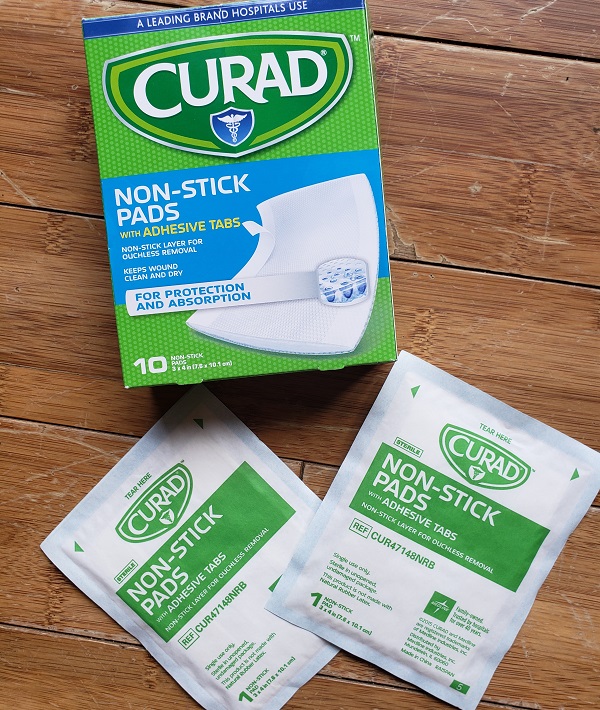
While the name may sound contradictory, these pads are intended to cushion wounds, not stick to them, although they can have adhesive side strips to help hold them in place. Wounds that need a little extra padding, including those with stitches, benefit from these nonstick bandages which help keep them protected while they heal.
Gauze pads
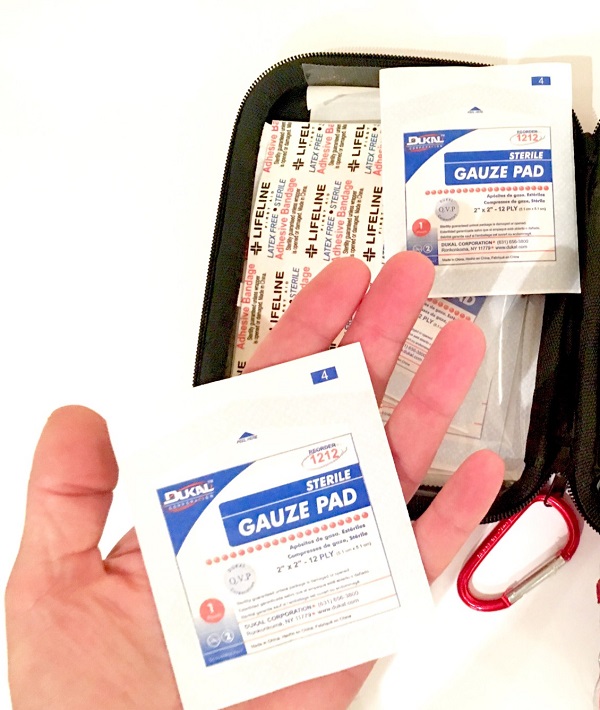
Alternatively, every first-aid kit should also have a hefty supply of gauze pads available. Gauze is absorbent and protective, helping cover wounds, stop excess bleeding and also give a clean surface to apply ointments when you're outdoors. Gauze pads can also double as eye pads in emergencies.
Assorted self-stick bandages
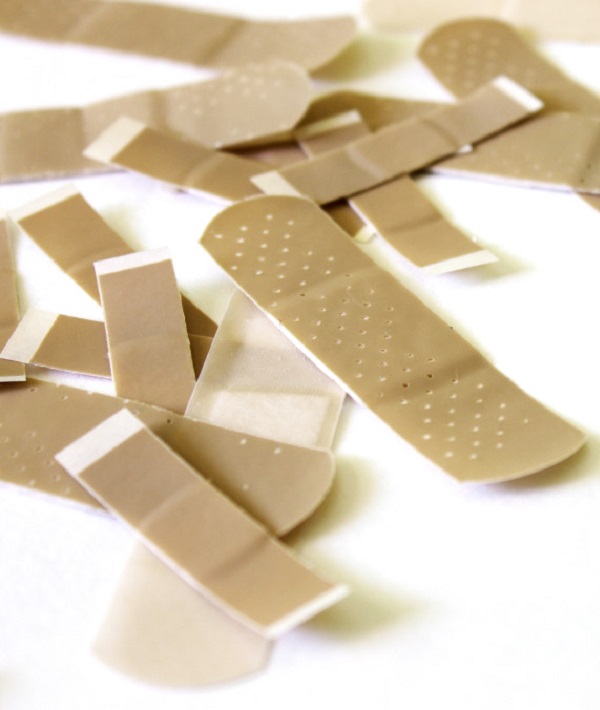
Whatever brand you choose, your first-aid kit should include a wide variety of self-stick bandages in an assortment of sizes. Fabric strips tend to work the best because they allow the wound to breathe while also keeping it protected. Make sure to include knuckle and finger bandages, as well as small, medium and large strip bandages.
Butterfly Closures
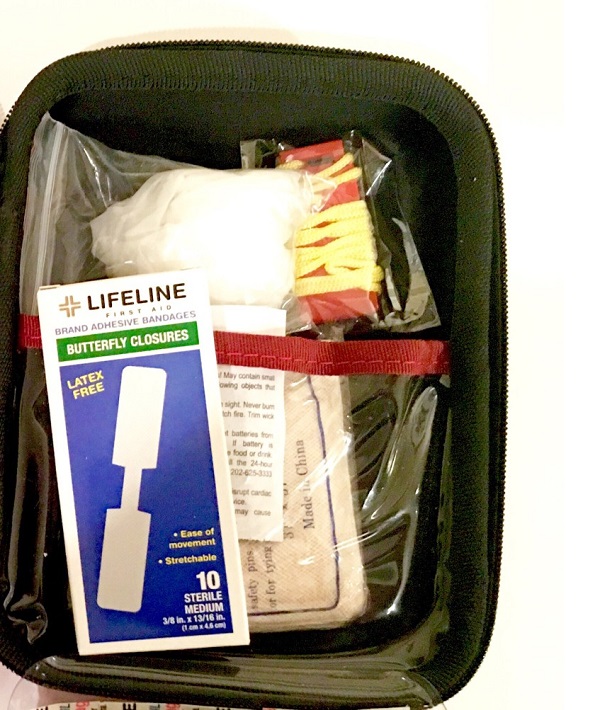
For deep cuts that might require stitches, it's always a good idea to have butterfly closures (also called butterfly bandages) in your first-aid kit. These specialty bandages, made for active or even accident-prone family members, help hold wounds together, allowing the skin to heal faster with less scarring.
Cloth tape
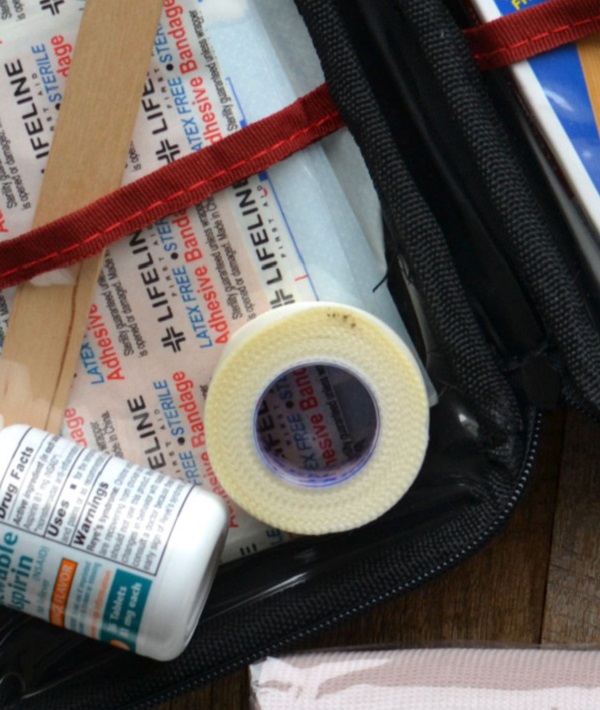
Not only does cloth tape (also known as medical tape and first-aid tape) help hold bandages and gauze in place, it can also double as a protective wrap, securing smaller injured or inflamed joints such as those on the fingers, toes and ankles. For kids who play impact sports, this tape can secure bandages on wounds and help keep sprained or strained joints immobilized.
Self-adhesive gauze
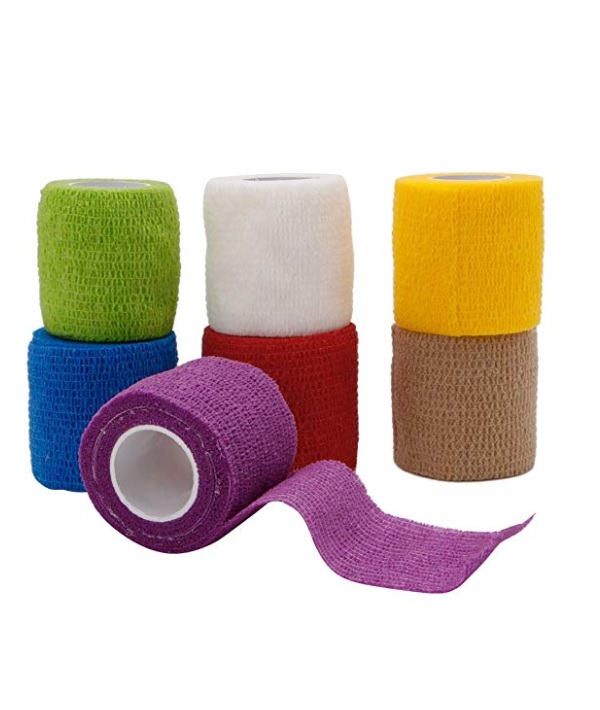
For larger injuries and wounds, nothing beats self-adhesive gauze. This adjustable, sticky wrap can immobilize larger joints (like elbows, wrists, knees and more) as well as hold bandages in place over wounds. It's the same stuff many labs use to cover an injection site after taking blood. What's really great about this tape is that it's only mildly sticky, allowing for easy removal. It's also less bulky than traditional gauze roller bandages and doesn't require Velcro or metal fasteners to hold it in place.
Irrigation syringe
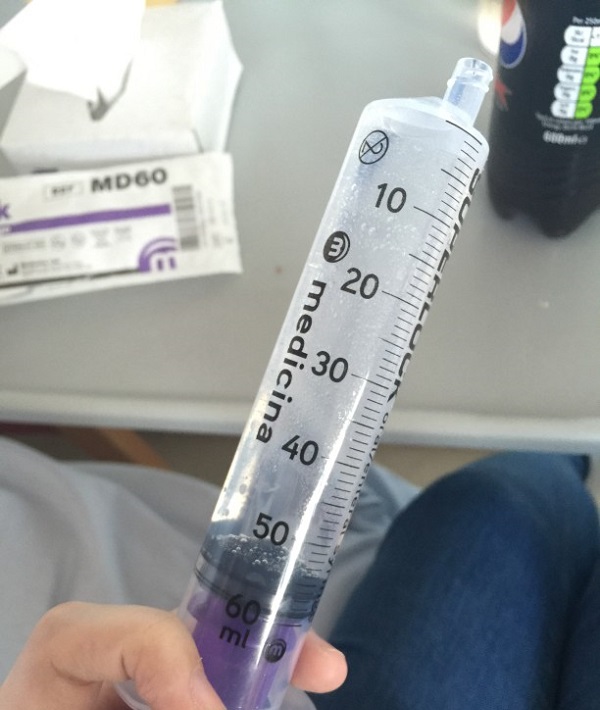
These mega-sized syringe tubes are really helpful to keep in first-aid kits. Used with clean water, they can flush a wound that has debris in it (usually after falls on concrete or sand). These needle-free syringes are also great for flushing debris out of an eye, which has delicate tissues and shouldn't be touched with fingers.
Antiseptic
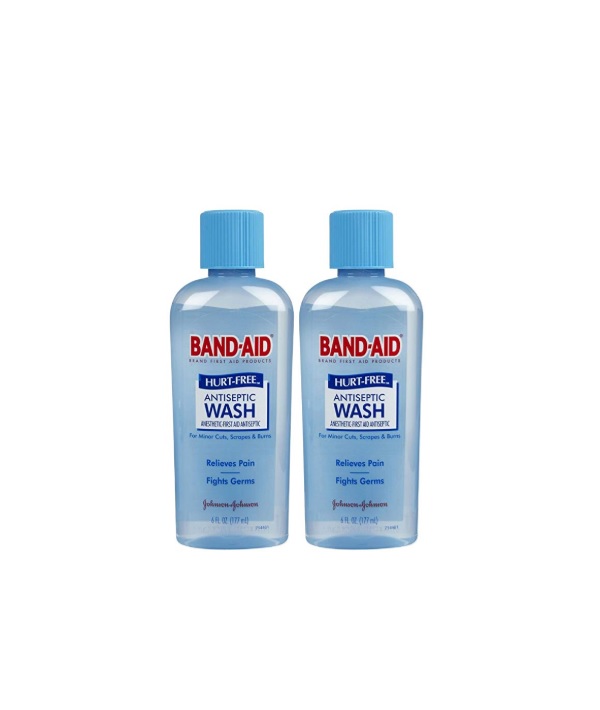
Carrying an antiseptic in your first-aid kit is smart planning. Whether you use a commercial "wound wash" or rely on products like hydrogen peroxide, Bactine or Betadine, having an antiseptic available, especially when you're outdoors, can drastically reduce the amount of bacteria in a wound and allow for safer healing.
Antibiotic ointment
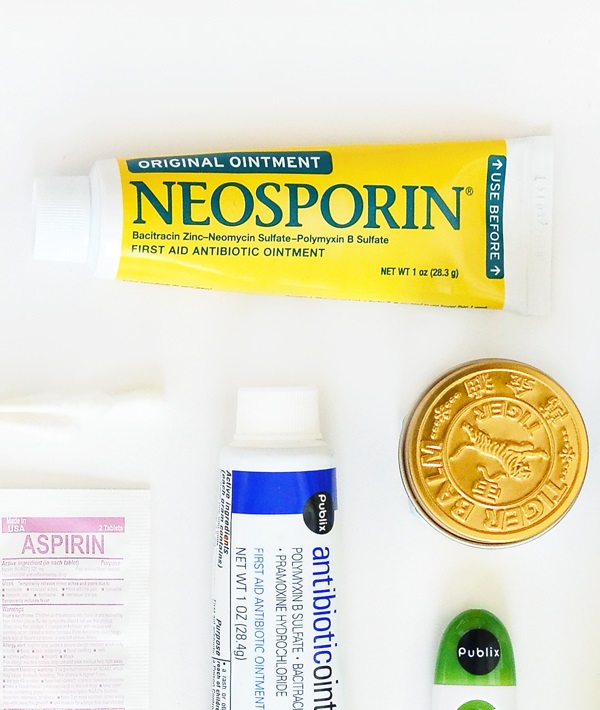
Kids and adults alike are prone to cuts and scrapes during the summer when they're playing outdoors more often. On top of washing a wound with soap and water and using an antiseptic to prevent infection, it's a good idea carry antibiotic ointment in your first-aid kit. Use it before covering a clean wound with a bandage. The ointment will provide another layer of protection from invasive bacteria while also helping the skin stay moist, which allows for faster healing.
Itch reliever

If you're headed outdoors this summer, make sure to pack some itch relief cream or gel in your family's first-aid kit. Typically containing a topical form of diphenydramine (the same medicine that is in Benadryl), these quick-acting salves help relieve the itch from allergic rashes and bug bites. Other possible formulations include calamine lotions, which, along with relieving itch, can help dry out irritated skin.
Instant cold compress
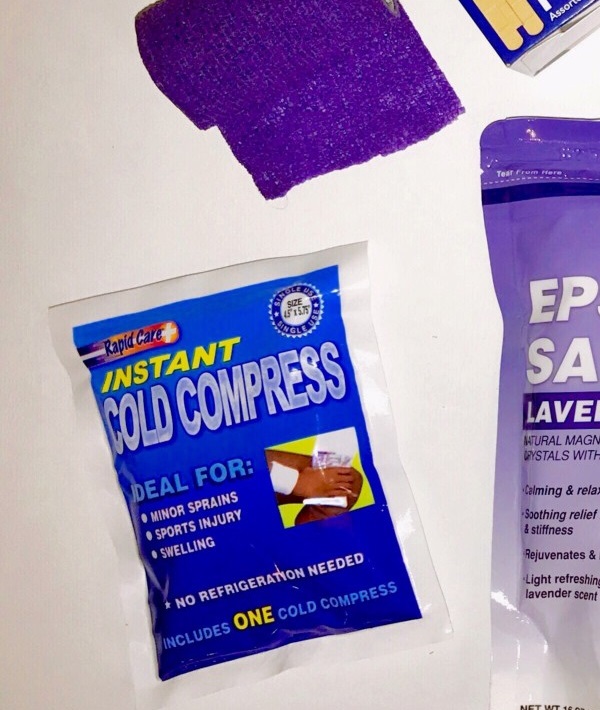
Because packing actual ice in your first-aid kit isn't possible, families should always have a few instant cold compresses available. These smart pouches turn ice cold with a few shakes, allowing people to soothe twisted ankles, sprained elbows, painful headaches and more. Since these packs only remain cold for 10 to 15 minutes, it's important to have a few on hand in case of emergencies.
Digital thermometer
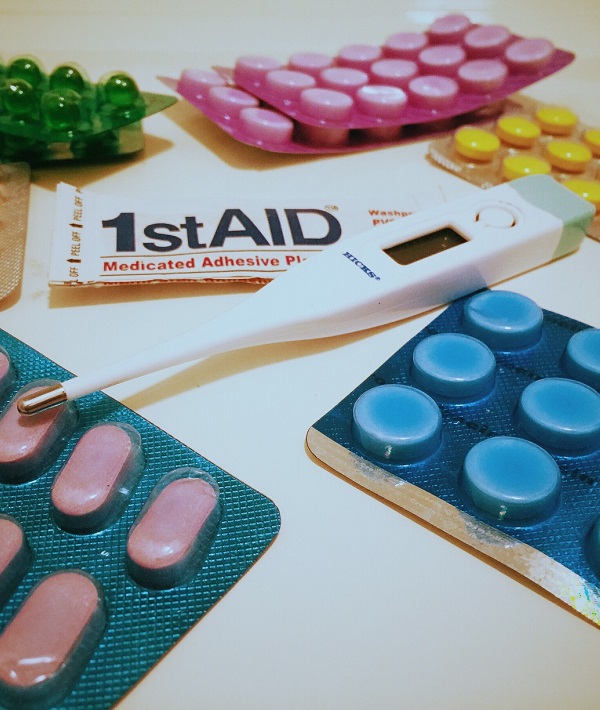
This one's a no-brainer. Having a digital thermometer in your first-aid kit is an important diagnostic tool, especially for when you or your family are away from home. Since infections and dangerous sicknesses often cause fevers, knowing if someone's body temperature is above 98.6ºF can also help you assess whether or not they need to go to the hospital for further medical attention.
OTC pain relievers
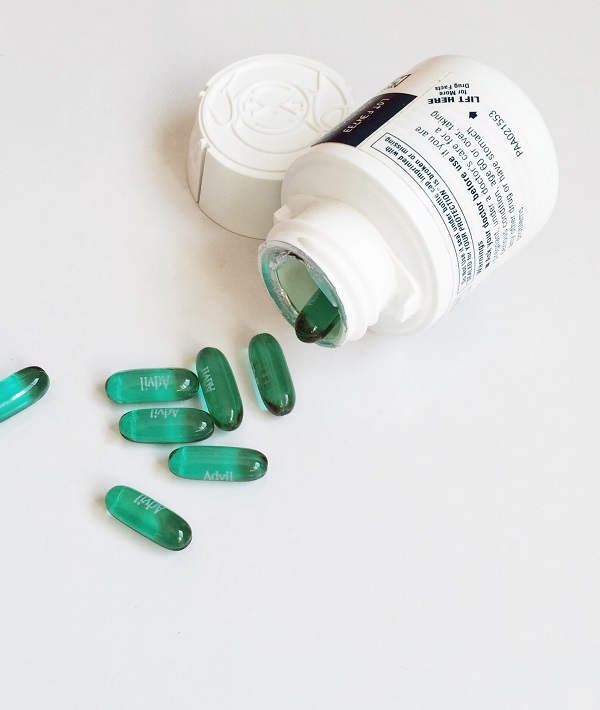
An over-the-counter (OTC) pain reliever, such as acetaminophen or ibuprofen is another important product to have in your first aid arsenal. These anti-inflammatory medications help relieve pain, reduce swelling and bring down fevers. The American Red Cross also advises people to have aspirin in their first-aid kit, presumably for pain relief and as an emergency treatment for heart attack (while also going straight to the nearest hospital).
Oral Antihistamines
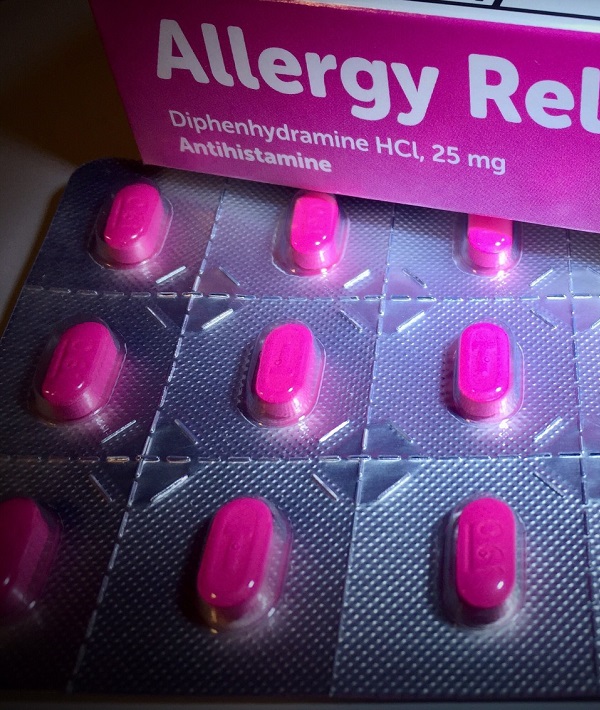
Summer hikes, campouts and getaways all mean families need to have oral antihistamine medication in their first-aid kits. These allergy fighters, often consisting of diphenhydramine or chlorpheniramine, help reduce the onset of a mild allergic reaction, including wheezing, hives, sneezing and rashes, and are a helpful first line of defense against agonizing symptoms caused from hay fever, bug bites and even poison ivy.
Stomach meds
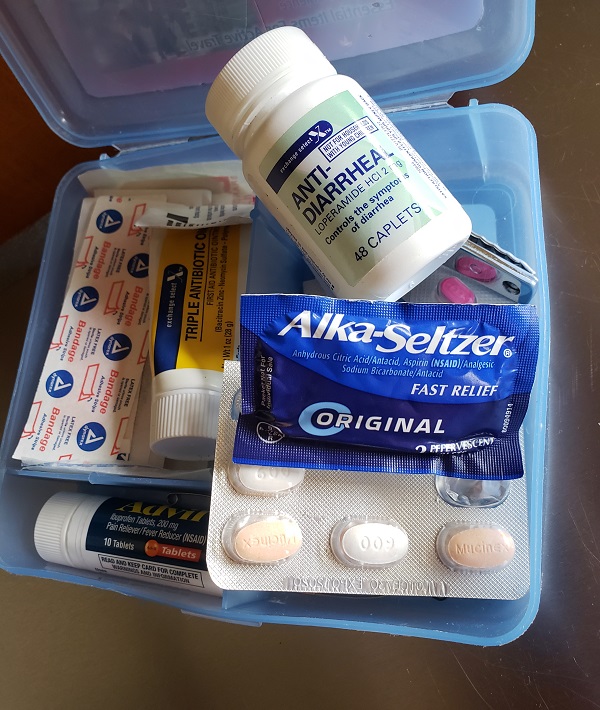
Headed on a summer road trip? Definitely make sure to pack some stomach-soothing medication in your first-aid kit to treat indigestion, heartburn, upset stomach and diarrhea. Effective oral OTC medications include Bismuth subsalicylate, sodium hydrogen carbonate, calcium carbonate chewables and anti-diarrhea loperamide capsules. Having a supply of these medicines can relieve car sickness, loose stools and a sour stomach from eating unfamiliar foods.
Scissors
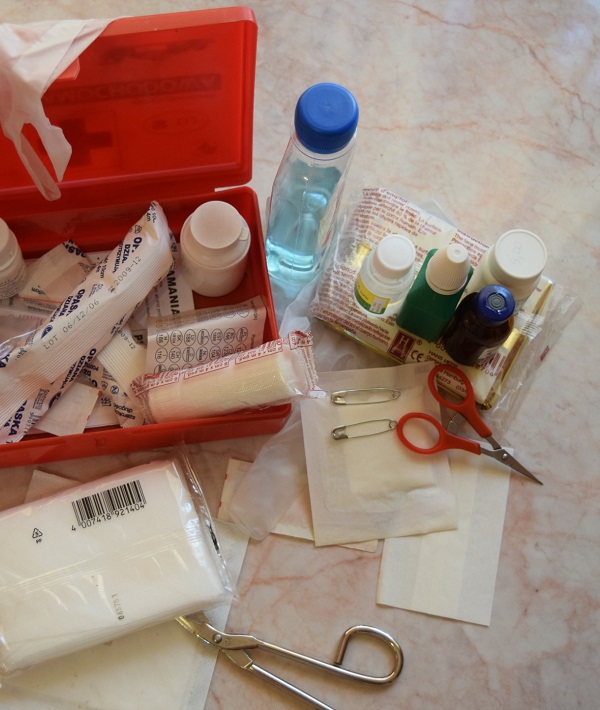
Scissors aren't just useful when it's time to cut bandages or gauze. They're also an important item in every first-aid kit because, during emergencies, they can cut clothes away quickly to reveal an injury, or cut away string, netting or cords that are wrapped dangerously around the body.
Tweezers
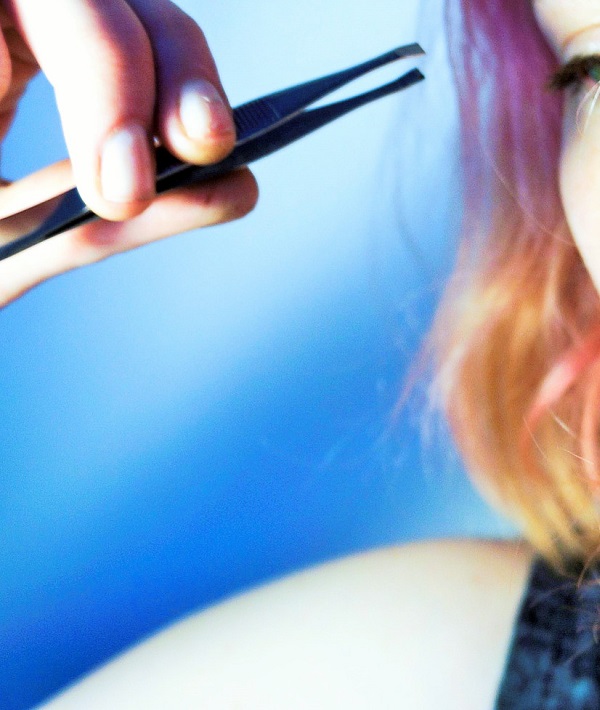
Tweezers may be necessary in every beauty kit, but they're also an important tool in every first-aid kit. Wounds with gravel, glass or other debris can be cleaned, and bee stingers, ticks and even painful splinters acquired during outdoor play are easily removed with tweezers. Another way blunt-edge tweezers can save the day? Use them as a splint, along with medical tape, to immobilize a broken or sprained finger.
A cotton scarf
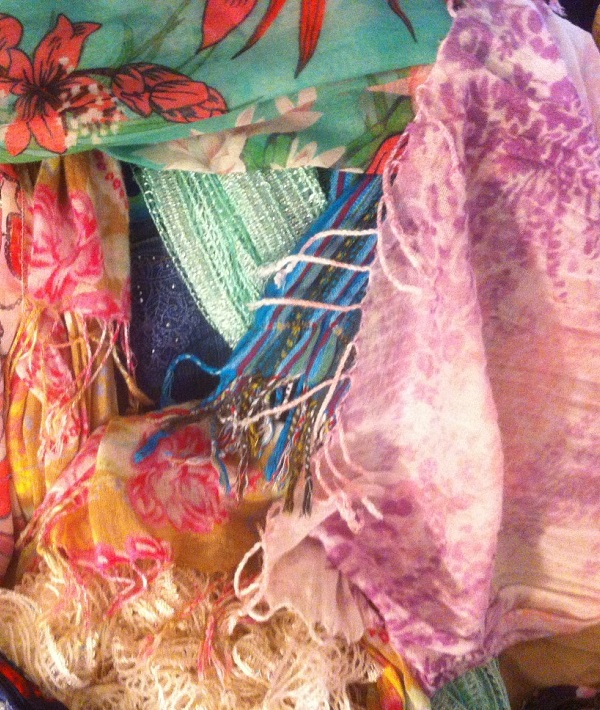
You might think this sounds odd, but hear us out. Having a cotton scarf in your first-aid kit makes a whole lot of sense, when you're in an emergency. From providing extra absorbency and wound protection, to turning into a make-shift sling for a hurt limb and even acting as an impromptu pillow for those who've fallen ill, a clean cotton scarf has numerous handy uses (aside from keeping you warm) that make it a great addition to any first-aid kit.

